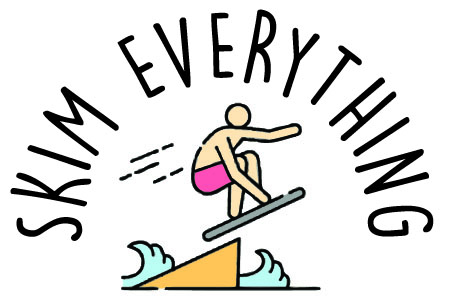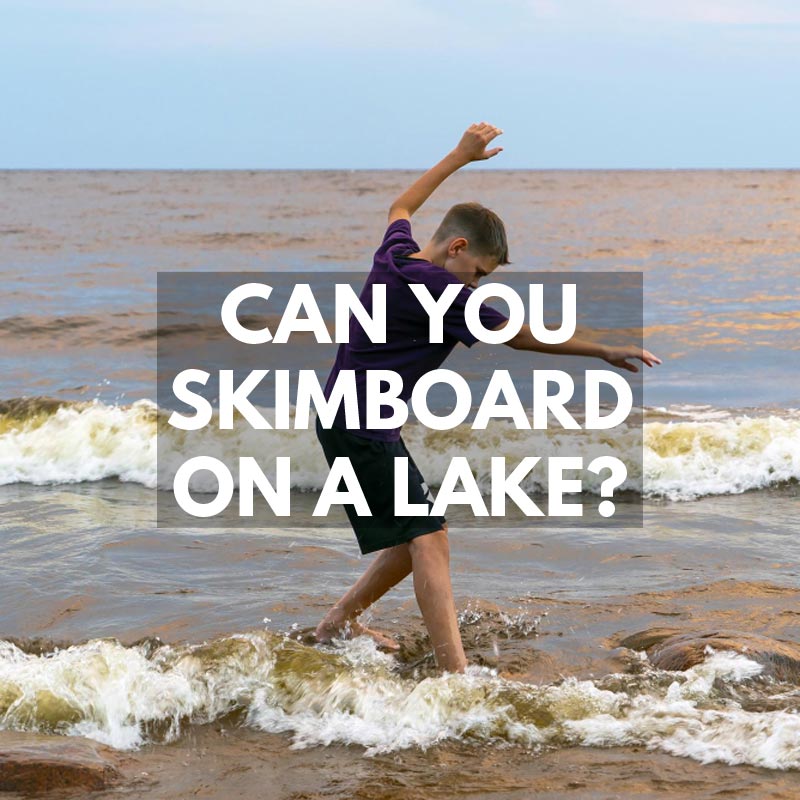
In this guide, we answer the question can you skimboard on a lake? We share tips on choosing the best spot at a lake to skimboard and also some of the best lakes in America to practice skimboarding inland.
Can You Skimboard on a Lake?
Lakes are the perfect place to practice skimboarding if you don’t live anywhere near the ocean. Once you find a good spot you can get some serious distance with your skimming because the water is so flat. The downside to skimming at lakes is that there are no waves to catch apart from the odd ripple from passing boats.
Skimboarding on a lake, and we mean on the banks of a lake, is a great way to learn the basics of skimboarding without the moving water of rivers or waves of the ocean. But they can also be fun if you already know how to skimboard. See our guides on cool skimboarding tricks like ollies, shuvits, and even kickflips.
The ideal situation for skimboarding on a lake is a lake with flat sandy banks and a water depth of around a half-inch. As little wind as possible is best, so there’s no choppy water or small waves when you skim.
Skimboarding on a lake can also extend to a river bank, wet grass, or even a flooded car park.
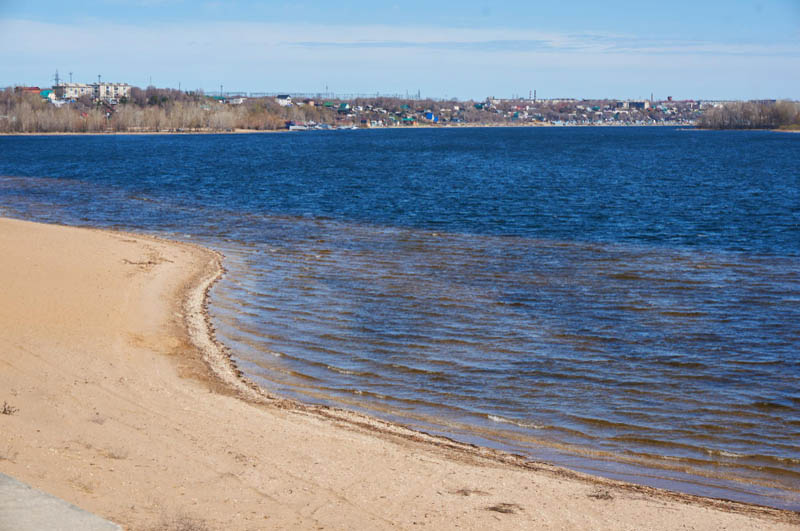
What Type of Lakes Can You Skimboard On?
There are many types of lakes you can skimboard on but if you want the best conditions, look for long sandy beaches with a gradual incline into the water (so it doesn’t drop off into deep water straight away. Here are the conditions we look for when we arrive at a lake we’ve never been to before:
Sandy Beaches
Sandy beaches and banks are ideal because it hurts less when you fall off. The flat surface of wet sand also provides a solid enough platform to take a run-up and launch from. Because sand is typically quite light in color, you can also see any potential hazards beneath the water easier which improves safety.
Shallow Water
A shallow water depth is important for lake skimboarding. About a half-inch is perfect but once you go beyond about 6 inches you lose your speed much quicker. Because when we skim, we are actually gliding across the underlying surface with help from the water, not gliding on the water itself, spooky.
The science behind skimming in shallow water and how it works is called hydrodynamic pressure between our skimboard and the underlying surface. Giving us an almost frictionless buffer to stand on. Like a puck on an air-hockey table.
Deeper water displaces this pressure and we lose our support buffer. This means to skim in deep water we need a heck more speed than on a shallow bank.
No Big Drop-Offs
Having no big drop-offs, where the water suddenly goes deep is important for the same reasons as above. Often, big drop-offs happen close to banks, leading to a much smaller area to actually skim in.
If you are struggling to find shallow spots to skim in, check out any areas where streams are feeding into the lake as these tend to have less steep dropoffs into deep water from the shore.
No Big Rocks Just Beneath the Surface
Although it is quite obvious to say, it can be hard to see; rocks, sticks, and debris which can lurk just under the surface. Falling on them really hurts and can cause a serious injury if you’re unlucky.
Go for a walk around first to check it out. If there are sticks, logs, or large rocks on the dry banks of the lake, that’s a clear sign of debris in the water. Even worse than all of these is rusty metal which becomes shard and can be lethal.
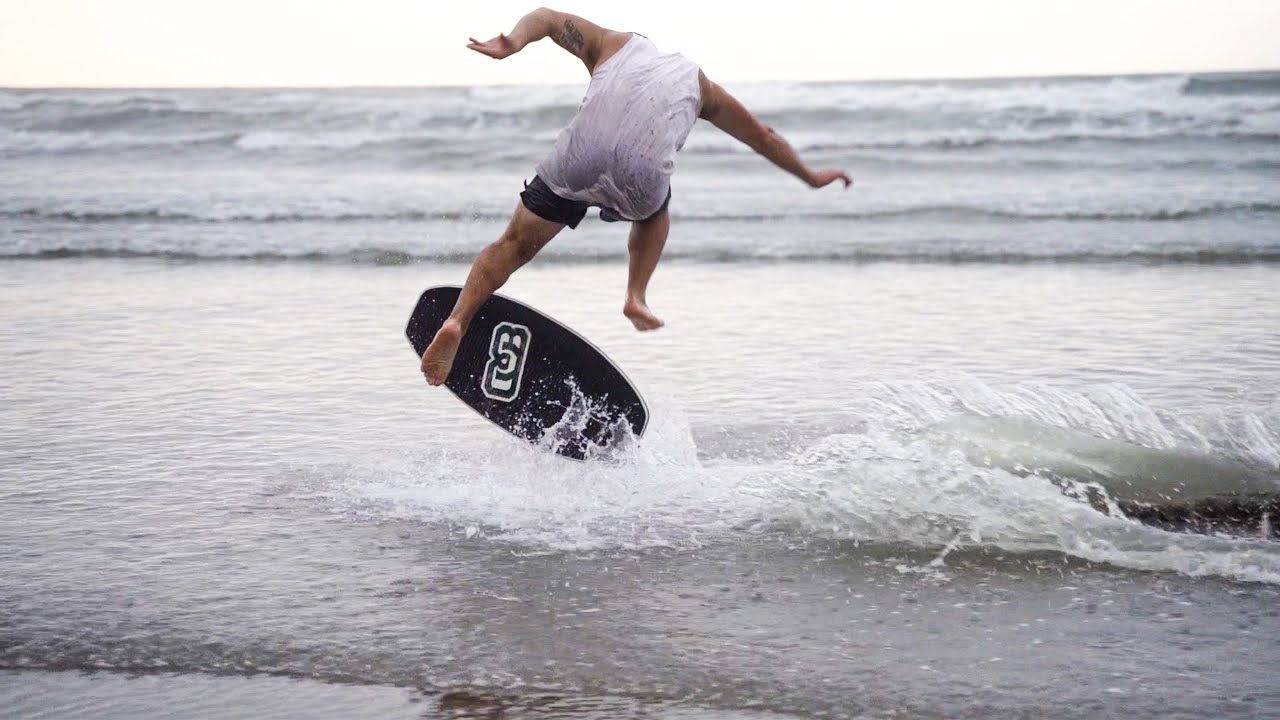
Do You Need Shoes to Skimboard on a Lake?
While you don’t need shoes to skimboard on a lake, it can have advantages, such as;
- Protects your feet from skimboard injuries
- Protects your feet from rocks
- Can improve grip
- Gives a softer landing on tricks, and helps the top of your foot/toes when trying kickflips.
The disadvantages are;
- Increased chance of rolling your ankle
- Much harder to run fast on sand
Rolling your ankle happens SO EASILY when wearing shoes on sand that we don’t advise you to do it. If you must wear shoes then check out some flat-soled skate shoes for the best grip. Alternatively, you can go for some Vibram FiveFinger shoes which are more like being barefoot.
Where is the Best Place to Skimboard on a Lake?
The best place on a lake to skimboard on a lake is a flat bank with shallow water. It helps if there’s no wind, or better yet, wind behind you. No debris like rocks or sticks, and no drop-offs in the water.
The absolute pinnacle is a U-shaped beach, where you can skim across the U. This is awesome because it almost guarantees a consistent shallow water depth, and you can go back and forth in one area.
Can You Skimboard on A River?
You can skimboard on a river. Be careful of the speed of the river and any currents. Currents bring debris like sticks and logs.
Skimboarding against the river flow will slow you down. Skimming with the current will help you skim faster. Chose wisely.
Read the points earlier in the article for hazards to look for, because these hazards occur more often in rivers than lakes.
Skimming out into the deep water of a river (or lake) can be super fun but it requires as much speed as you can get. So make sure there is enough space for the fastest run-up you can possibly do. You’ll need it.
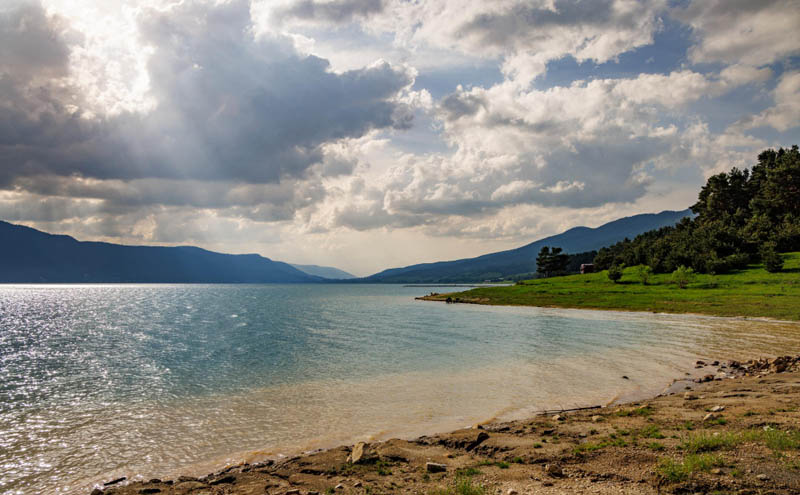
Where Are Some Good Lakes to Practice Skimboarding?
Here are 3 lakes that are confirmed to have good places to practice skimboarding:
The Great Lakes, North America
No great surprise, the Great Lakes are home to many miles of sandy banks for skimboarding. Spanning so many states and taking so many visitors per year, there are great facilities and enough space for everyone. For a list of the great lakes check this out.
Lake Ivanhoe, Wisconsin
Huge amount of banks and some beautiful scenery, no wonder Lake Ivanhoe is a great place for skimboarding. Also popular with the wakeboarding crew, so check out the events happening before you go.
Surrounding towns are also rich in historical things…. Great to keep the non-skimboarders busy.
Radar Lake, Washington
Radar Lake is in Woodinville, Washington. Purpose-built for water sports. Therefore it has all the facilities you’ll need for skimming and many other lake sports. The lake banks are absolutely huge and the surrounding forestry is breathtaking.
We hope you found this guide answered your question of “can you skimboard on a lake?”
